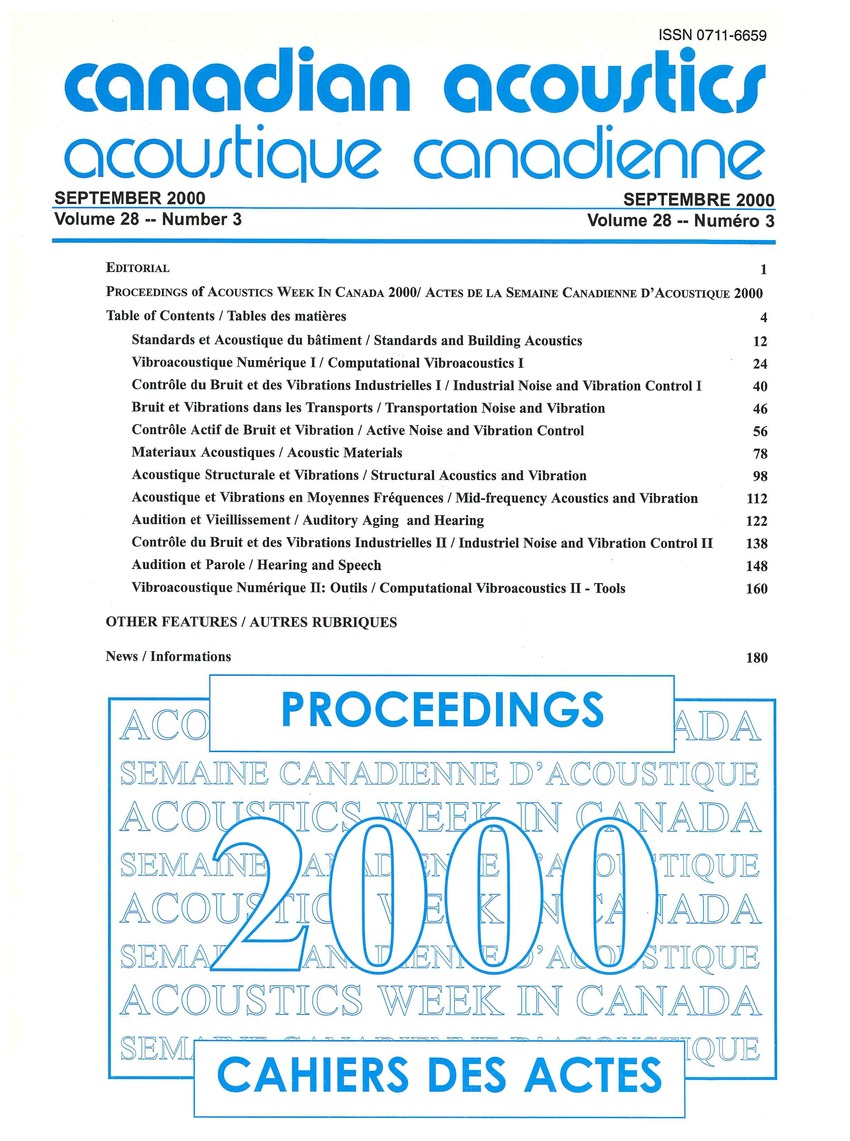Comparaison entre réseau de neurones et LMS à référence filtrée appliqués au contrôle actif de bruit
Keywords:
Algorithms, Active noise control (ANC)Abstract
L’algorithme généralement utilisé pour des problèmes de contrôle actif de bruit est du type LMS. Celui-ci est bien connu, facile à implanter et converge rapidement vers la solution optimale. Cependant, le LMS est sensible aux perturbations externes. Les réseaux de neurones sont, pour leur part, bien adaptés aux systèmes non-linéaires. En effet, la sortie d’un neurone est modulée par une fonction sigmoïde, dans le cas présent, une tangente hyperbolique. Cela implique qu’une modélisation par un réseau de neurones intègre la saturation qui intervient sur le signal de commande à la sortie du processeur. La présente étude compare le comportement d’un algorithme FX-LMS (LMS normalisé à référence filtrée) à celui d’un réseau de neurones à référence filtrée face à une perturbation externe.Additional Files
Published
How to Cite
Issue
Section
License
Author Licensing Addendum
This Licensing Addendum ("Addendum") is entered into between the undersigned Author(s) and Canadian Acoustics journal published by the Canadian Acoustical Association (hereinafter referred to as the "Publisher"). The Author(s) and the Publisher agree as follows:
-
Retained Rights: The Author(s) retain(s) the following rights:
- The right to reproduce, distribute, and publicly display the Work on the Author's personal website or the website of the Author's institution.
- The right to use the Work in the Author's teaching activities and presentations.
- The right to include the Work in a compilation for the Author's personal use, not for sale.
-
Grant of License: The Author(s) grant(s) to the Publisher a worldwide exclusive license to publish, reproduce, distribute, and display the Work in Canadian Acoustics and any other formats and media deemed appropriate by the Publisher.
-
Attribution: The Publisher agrees to include proper attribution to the Author(s) in all publications and reproductions of the Work.
-
No Conflict: This Addendum is intended to be in harmony with, and not in conflict with, the terms and conditions of the original agreement entered into between the Author(s) and the Publisher.
-
Copyright Clause: Copyright on articles is held by the Author(s). The corresponding Author has the right to grant on behalf of all Authors and does grant on behalf of all Authors, a worldwide exclusive license to the Publisher and its licensees in perpetuity, in all forms, formats, and media (whether known now or created in the future), including but not limited to the rights to publish, reproduce, distribute, display, store, translate, create adaptations, reprints, include within collections, and create summaries, extracts, and/or abstracts of the Contribution.


